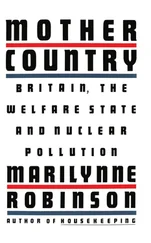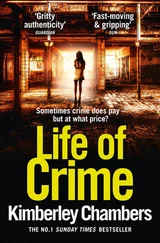It was only from the middle 1950s onward that it become apparent that although the economy was expanding and Britain was becoming more affluent, its industries were making do with obsolete equipment while the rest of Europe re-equipped. Europe’s prosperity was increasing at roughly twice the rate of Britain’s as the post-war version of relative decline set in. Each period of ‘stop’ and ‘go’ affected the welfare state. Equally, some of the welfare state policies were affecting the economy. Chief of these was housing. And it was housing which first and most clearly showed the party divide over the boundaries of the public and private sectors in welfare.
Housing
The Ministry of Housing was like cricket, you could see the runs, the houses were being built.
Harold Macmillan, quoted in Hennessy, Whitehall, p. 438
This is my moment and I intend to ram it home.
Ben Parkin, speaking in the Commons at the height of the Rachman scandal, Hansard, 22 July 1963, col 1119
A drama of optimism turning into arrogance and ending in disaster … if lifts and security [had] worked, the story would be very different.
Patrick Nuttgens on high-rise housing, The Home Front, 1989, p. 95
Politically, we had to remember that raising the rents of nearly two-thirds of the total houses, affecting anything between 16 and 20 million people, was not exactly an easy operation.
Harold Macmillan, Tides of Fortune, p. 444
Labour’s departure in 1951 saw the end of a six-year period (twelve, if the war is taken into account) when the building of new homes had come close to being a state service. Three-quarters of all new building had been council houses, publicly financed through central government grant and rates; and all of it had been state controlled: private houses, and even repairs above the most minor, had required licences. Bevan had, however, turned down the idea of nationalising housing, and first he and then Dalton had gradually eased restrictions on private house building, allowed councils to lend for house purchase, and introduced improvement grants for private housing. But when Macmillan, the new housing minister, started to shift more sharply the boundaries between public and private provision the issue acquired a new ideological and political edge.
When Bevan departed, housing had been split from its fifty-year association with health. Macmillan, in evidence of intent over the 300,000 houses target set by the Tory party conference, promptly renamed Dalton’s Ministry of Local Government and Planning the Ministry of Housing and Local Government and set out to make his and the Tories’ reputation as guardians of the welfare state. 4He had not wanted the job, telling Churchill: ‘I know nothing whatever about the housing problem.’ To that the Prime Minister replied with considerable foresight: ‘It is a gamble – [it will] make or mar your political career.’ 5For the next three years, with Churchill’s backing, Macmillan put housing at the head of the welfare state queue, beating other areas for resources and launching in earnest the numbers game that was to dominate housing policy for much of the next twenty years.
With the showmanship that was increasingly to mark him out, within three months of taking office Macmillan announced ‘The Great Housing Crusade’. 6He needed a crusade to protect him from the Treasury. For the first year of Conservative rule was a period of economic crisis, as officials warned the new Chancellor, Butler, that the blood was ‘draining from the system’ and that Britain was once again staring ruin in the face. 7The pledge to build 300,000 houses became Macmillan’s ‘sheet-anchor’ allowing him to ride out the economic gale 8and resist cuts through a mixture of elegant bullying, the odd hint at resignation and a reorganisation of his department on wartime-like lines of control. The net result, he noted, was ‘more than my fair share’ 9of resources.
To reorganise a department ‘concerned with guidance, advice, supervision, sometimes even warning and reproof, but never with positive action’, 10Macmillan brought in as Director-General Sir Percy Mills, an industrialist who had been controller of machine tools during the war. The appointment caused no little friction in Whitehall, not least with Beveridge’s old adversary Sir Thomas Sheepshanks who was now Macmillan’s permanent secretary. 11Macmillan once brutally dismissed him as ‘useless’. 12The resentment of Mills was one of the early signs that a civil service leavened and enlightened during the war with outside expertise now once again regarded itself as the sole guardian of policy development and administration.
Almost everything except labour still remained in short supply – bricks, steel, timber, cement; Macmillan at one point complained that surely the last of these could be produced more quickly when all it amounted to was ‘Thames mud and chalk’. 13To hit 300,000 a year, Macmillan cut further the minimum size for council housing which Dalton had already eroded, encouraged the building of smaller two-bedroom houses by councils, and relaxed and then removed licences for private house building. His aim, he declared, was ‘to set the builders free’. He also allowed the first post-war council house sales, the aim being to cut Treasury subsidies for rents and to generate more capital. 14Some 3000 were sold by the 1955 election. 15Macmillan thus initiated a policy which in a different form would eventually become Mrs Thatcher’s icon. As he told the Commons in December 1951, in what was to become a recurring Conservative theme: ‘We wish to see the widest distribution of property. We think that, of all forms of property suitable for such distribution, house property is one of the best.’ 16
But as Macmillan himself made clear, crucial to the numbers game was the cut in the size of council houses. The smaller ones were now popularised as ‘The People’s House’ and promoted to the public on the grounds that while they might be smaller, their rent was lower. There were repeated exhortations to reduce the number of bricks and other materials used. ‘Unless we get the economies, we shan’t get the houses,’ he declared. Timber and steel shortages also saw the introduction of much more reinforced concrete and of steel-reinforced lintels, a permanent change in housing construction. 17
‘The fierce and almost frantic pursuit of the housing target filled my mind,’ Macmillan remembered. The monthly figures provided ‘a scorecard on which the eyes of all the critics, friendly and hostile’ were riveted. Bets were laid between political colleagues on whether completion figures would be attained. 18It was not quite a case of ‘never mind the quality feel the width’; but it was heading that way as quality and quantity came into conflict. Macmillan’s resolution of the problem differed from Bevan’s, and problems for the future were created.
Quantity, however, was needed. By 1952, early returns from the first population census in twenty years indicated one million more households than dwellings, and more than two million dwellings which were shared by two or more families. 19This grim picture, despite a million houses having been built since 1945, was the result of demographic change. Since 1931, the population of England and Wales had risen by only 10 per cent, but the number of households had increased by 28 per cent, or nearly three times as fast: the result of more single elderly, survivors of the First World War, and the growing popularity of both marriage and smaller families. Thus over twenty years, the number of one and two person households had risen from 29 to 39 per cent of the total, while the number of big households (six members or more) had halved from 16 to 8 per cent. 20Macmillan achieved his numbers, helped in part by the ‘valuable inheritance’ of the New Towns, a development he regarded as showing ‘real imagination’ on Labour’s part. 21He was aided by Sir Percy Mills and the regional housing boards they set up, the drive of Dame Evelyn Sharp, an under-secretary who was shortly to become one of Whitehall’s few female Permanent Secretaries, and the ministerial expertise of the self-made engineer Ernest Marples, who shocked colleagues when he arrived in Parliament in 1945 sporting orange-brown shoes beneath his blue suits. 22Macmillan once acknowledged simply: ‘Marples made me PM: I was never heard of before housing.’ 23
Читать дальше
![Nicholas Timmins The Five Giants [New Edition]: A Biography of the Welfare State обложка книги](/books/701739/nicholas-timmins-the-five-giants-new-edition-a-cover.webp)











